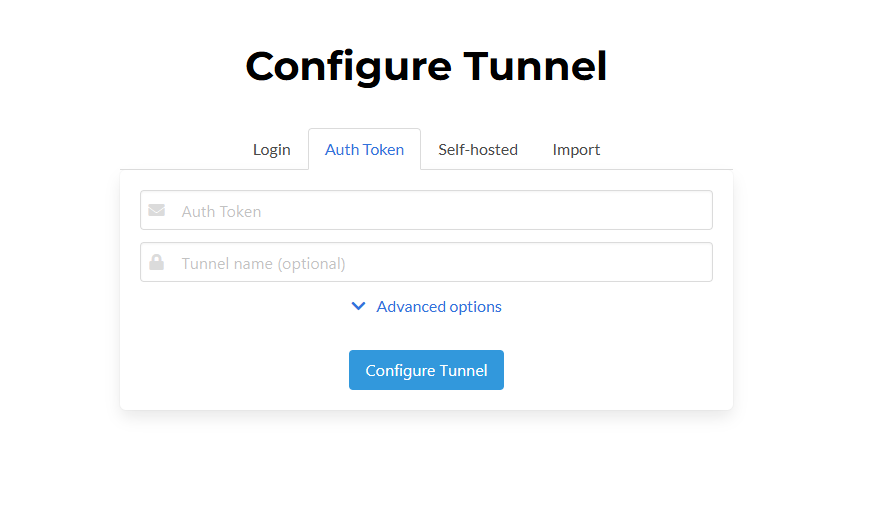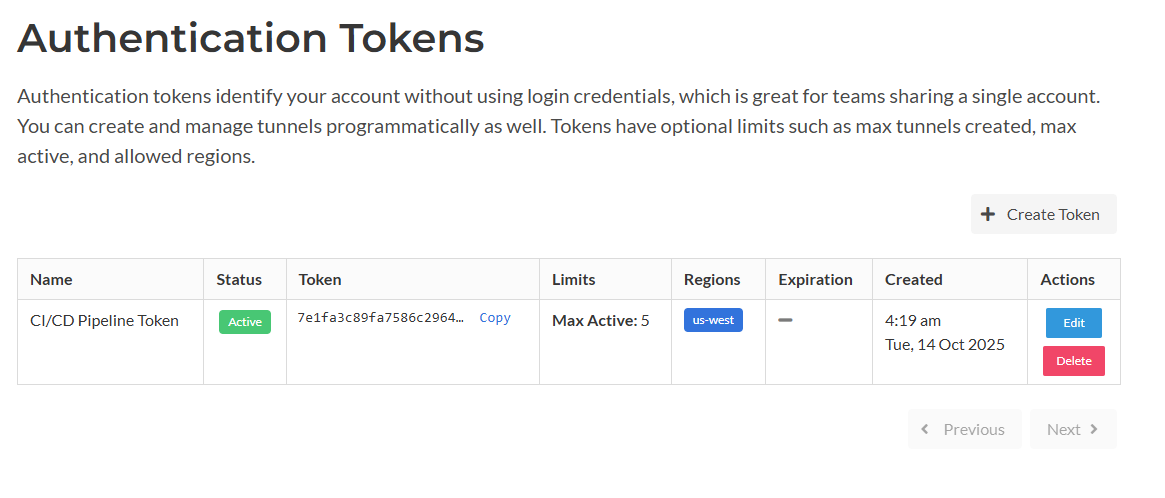Client v0.16.1
Published at October 14, 2025 · 4 min read
Share on:We’re excited to release v0.16.1 of the Packetriot client. This release introduces some minor changes and fixes some bugs.
Thanks to those who reported issues.
Reserved Subdomain Management via API
The client API has been extended to support actions and automation for reserved subdomains.
Custom subdomains are a feature in all subscriber plans and can be used to create a “floating” endpoint for different tunnels over time. It’s a step further beyond the persistence of the hostnames assigned to tunnels.
To support more automation using subdomains, we’ve added these new endpoints:
| Endpoint | Description |
|---|---|
/api/client/v1.0/tenents/list |
List the tenant domains available, e.g., pktriot.net, reversetunnel.net, and others. |
/api/client/v1.0/subdomains/list |
List all subdomains related to the account, including their current tunnel assignment as well. |
/api/client/v1.0/subdomains/assign |
Assign a reserved subdomain to a tunnel; we expect it will typically be the tunnel being interacted with via the API. This enables the subdomains to be effectively used for traffic rules now. |
/api/client/v1.0/subdomains/reset |
Clears the assignment for a subdomain. |
/api/client/v1.0/subdomains/reserve |
Reserves a subdomain for a given tenant domain. |
/api/client/v1.0/subdomains/release |
This action releases the reservation of the subdomain back to the Packetriot pool. |
We expect these new endpoints to support a wide range of use cases.
You can combine a reserved subdomain with an authentication token (new feature described below), to automate consistent tunnels in a CI/CD pipeline:
- Create a tunnel in
before_stepand assign a subdomain - Run tests using the tunnel
- Reset the subdomain assignment and terminate the tunnel in the
after_step
You can apply a similar scenario to devices deployed in the field. You can implement a factory reset workflow that reserves a subdomain for a device, such as <serial-number>-device-company.pktriot.net, and then assign it to the newly created tunnel.
If the device is having connectivity issues, it can terminate the current tunnel, create a new one in a new region, assign a reserved subdomain, and reestablish connectivity using a new server.
We see many different scenarios being possible and fully automated using these new APIs. This is why we doubled the number of reserved subdomains for all subscription plans (no price increase).
Authentication Tokens
We added a new feature to Packetriot called Authentication Tokens, and they are available to Pro-level subscribers and higher. These tokens are secrets that can be used to authenticate and identify yourself when configuring a new tunnel.
Auth tokens make it simple for a team to share an account without having to share credentials.
The screenshot below illustrates the new configuration from in the web dashboard.

Configure new tunnels with authentication tokens
Tunnels can be configured via the client API using auth tokens as well.
Auth tokens aren’t just simple secrets, though and can be configured with these kinds of criteria:
- Expiration dates
- Specific regions which tunnels can be created
- And more!

Authentication token page in user portal
You can control how many tunnels created with an auth token can be active. This is useful when tokens are created for members of a team. An admin can establish a quota for each member to prevent anyone from accidentally exhausting their tunnel quota.
Auth tokens can be given overall limits on how many tunnels can be configured with them. They can also be temporarily deactivated, separate from an expiration date.
Use cases for Auth Tokens
Interested in what you can do with Authentication Tokens and the client API? Below are some example use cases:
- Configuring tunnels dynamically in CI/CD pipelines
- Shipping tokens with devices (instead of credentials or pre-made configuration files)
- Sharing resources with a development team
- And much more!
We plan to work on new tutorials demonstrating how to use auth tokens in a variety of scenarios.
Thanks
This release of the client, along with updates to the Packetriot user portal, introduces more use cases, greater automation, and enhanced convenience. Auth tokens improve security and ease of use for teams sharing a Packetriot account.
Businesses that are shipping Packetriot with devices can automate their deployments, factory reset workflows, and other processes using auth tokens and the client API.
We appreciate all the inputs and bug reports you’ve sent us. Let us know if we can focus on new features or improvements for our client. We are hoping to introduce a Windows installer in our next release and aim to tick over to v1.0.0.
There will be lots of new features and plan changes shipped in the next few weeks and months!
Cheers!